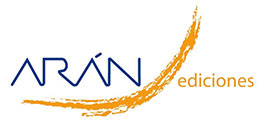Trabajo Original
Nutrients associated with diseases related to aging: a new healthy aging diet index for elderly population
Manuel Lozano Relaño, Lara Manyes, Juango Peiró, José María Ramada
 Número de descargas:
4714
Número de descargas:
4714
 Número de visitas:
13055
Número de visitas:
13055
 Citas:
7
Citas:
7
Compártelo:
Introduction: several indexes are used to measure the quality of nutrition in advanced ages. None of them were designed to evaluate nutrition to avoid disabilities in elderly population.Objectives: to retrieve from literature “nutrients and intakes” showing to be involved in aging, and propose a new index, considering this information, to evaluate the quality of nutrition for preventing diseases related to aging.Methods: a bibliographic review was performed, retrieving information on nutrients associated with aging. All these nutrients were incorporated into a new Healthy Aging Diet Index (HADI). Next, a cross-sectional study was carried out with two convenience samples of elderly, collecting the nutritional and dietary data, calculating different validated indexes and comparing them with HADI to validate the results.Results: forty-eight manuscripts were retrieved for full-text analysis. Associations were found between cardiovascular diseases and macronutrients,dietary fibre, sodium and vitamin D; cancer and fatty acids; diabetes and fatty acids, fibre and simple sugars; osteopenia/osteoporosis and calcium and vitamin D; sarcopenia and proteins, calcium, and vitamin D; and between cognitive impairment and fatty acids and folates. Sample 2, associated with rural areas, obtained lower indexes’ scores. The behavior of HADI is similar to the other indexes (6.24/14 and 6.10/14 in samples 1 and 2, respectively).Conclusions: the presented collection of nutrients adds useful evidence for the design of diets that allow healthy aging. The new index proposed is a tool of specific nutritional measurement in studies aimed to prevent diseases related to aging.
Palabras Clave:
Artículos más populares
Revisión: Inteligencia artificial generativa ChatGPT en nutrición clínica: avances y desafíos
ChatGPT y otras herramientas de inteligencia artif...
Revisión: Suplementación con micronutrientes y sus beneficios: ¿por qué y cuándo?
Introducción: los micronutrientes participan en la...
-
Licencia creative commons: Open Access bajo la licencia Creative Commons 4.0 CC BY-NC-SA
https://creativecommons.org/licenses/by-nc-sa/4.0/legalcode




